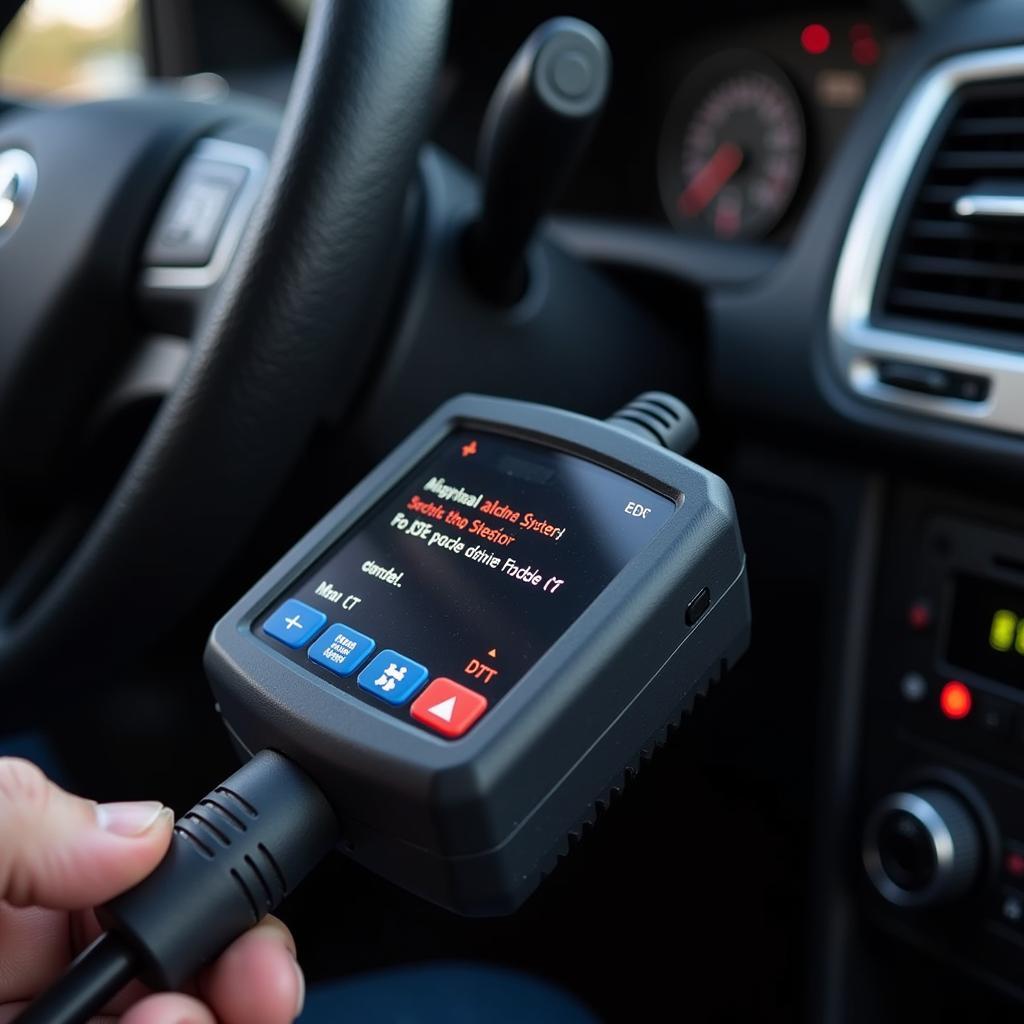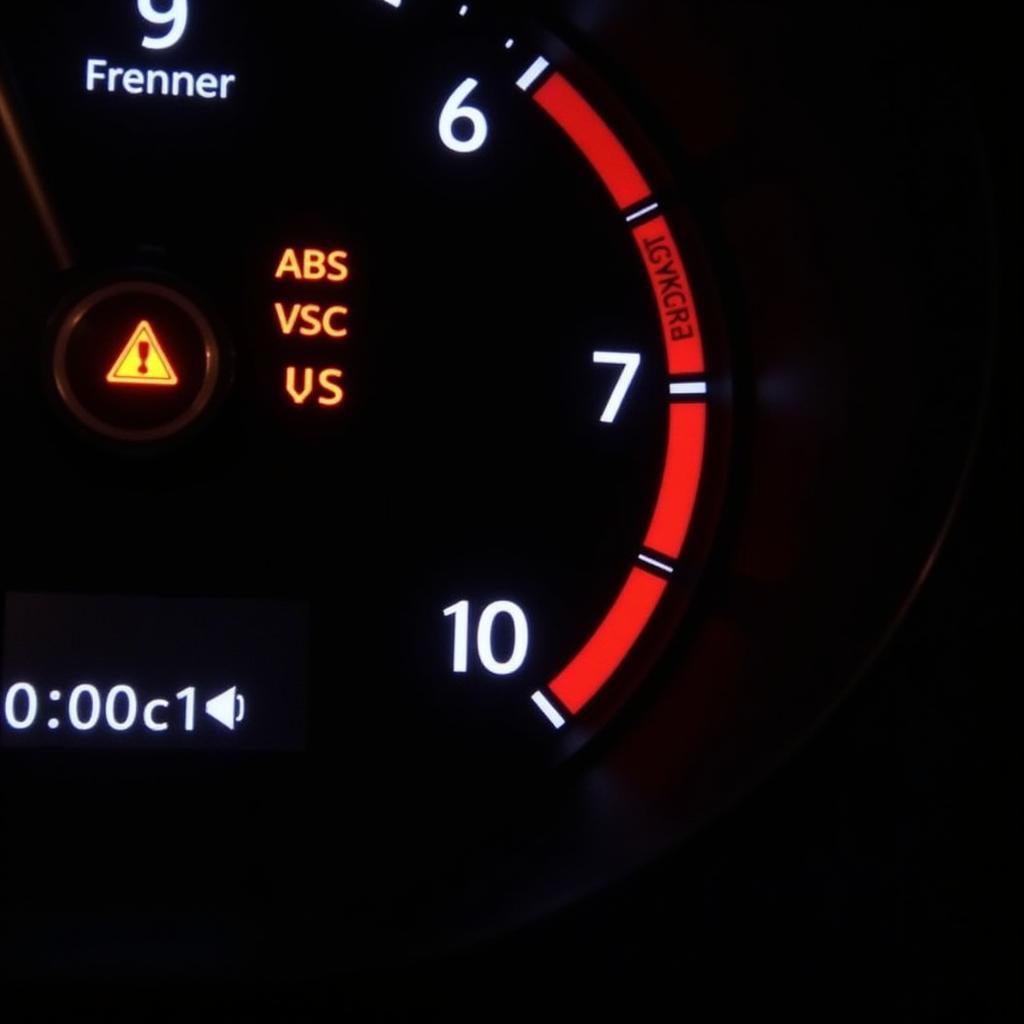The air bag and seat belt warning light is a crucial safety feature in your vehicle. When illuminated, it signals a potential issue within these systems, requiring immediate attention. Ignoring this warning could compromise your safety in the event of a collision. This comprehensive guide explores common causes, troubleshooting steps, and solutions for air bag and seat belt warning light issues.
Understanding the Airbag and Seat Belt Warning System
The airbag and seat belt warning light system works by constantly monitoring various components, including sensors, wiring, and modules. A malfunction in any part of this intricate network can trigger the warning light. This system is designed to be sensitive, ensuring even minor faults are detected. Addressing these issues promptly can prevent more serious problems down the line and keep you safe on the road.
Common Causes of Air Bag and Seat Belt Warning Light Activation
Several factors can trigger the air bag and seat belt warning light. Understanding these causes can help you diagnose the problem more effectively:
- Faulty Seat Belt Buckle/Pretensioner: A damaged or malfunctioning seat belt buckle or pretensioner can disrupt the signal sent to the airbag system.
- Damaged Wiring: Wiring harnesses within the seat belt and airbag systems can become frayed or corroded, leading to communication errors.
- Malfunctioning Airbag Module: The airbag module, also known as the SRS (Supplemental Restraint System) module, acts as the brain of the system. If this module fails, it can trigger the warning light.
- Sensor Issues: Sensors throughout the vehicle detect impacts and deploy the airbags. A faulty sensor can trigger the warning light, even without a collision.
- Clock Spring Issues: The clock spring allows the airbag and other steering wheel controls to function while the steering wheel rotates. Damage to the clock spring can interrupt communication.
- Low Battery Voltage: A weak battery can sometimes cause erratic behavior in the airbag system, triggering the warning light. This is less common but worth checking.
Similar to bmw seat belt warning sound not working, a malfunctioning component can trigger the warning light.
Troubleshooting the Air Bag and Seat Belt Warning Light
Diagnosing the specific cause requires a systematic approach. Here are some steps you can take:
- Check the Seat Belts: Ensure all seat belts are properly fastened. Sometimes, a simple oversight can trigger the warning light.
- Inspect Wiring: Visually check the wiring under the seats and steering wheel for any signs of damage or loose connections.
- Check the Battery: Ensure your battery is fully charged and functioning correctly. A low battery can sometimes trigger the warning light.
- Use an OBD-II Scanner: An OBD-II scanner can read diagnostic trouble codes (DTCs) stored in the airbag module. These codes can pinpoint the specific area of the problem.
 OBD2 Scanner Diagnosing Car Issues
OBD2 Scanner Diagnosing Car Issues
Advanced Diagnostic Techniques and Solutions
While basic troubleshooting can sometimes resolve the issue, more complex problems often require professional assistance. This is where remote diagnostics and software solutions come into play. Specialized software can access the vehicle’s systems remotely, allowing technicians to pinpoint the fault and even perform software updates or calibrations without physical access to the vehicle. This advanced diagnostic approach saves time and provides efficient solutions.
Just like flashing seat belt warning lamp, consistent flashing could indicate a specific issue.
When to Seek Professional Help
If basic troubleshooting doesn’t resolve the issue, or if you’re uncomfortable working with electrical systems, it’s crucial to seek professional help. Qualified technicians have the expertise and tools necessary to diagnose and repair complex airbag and seat belt system problems.
This scenario mirrors the tesla model 3 seat belt warning, where professional diagnosis may be needed.
Preventing Future Issues
Regular maintenance and inspections can help prevent future problems with the airbag and seat belt warning light system:
- Regular Inspections: Include airbag and seat belt system checks during routine maintenance.
- Careful Cleaning: Avoid using excessive force or harsh chemicals when cleaning around seat belts and airbags.
- Address Issues Promptly: Don’t ignore any warning lights. Addressing issues early can prevent more significant problems down the line.
For those curious about how to disable my seat belt warning light, remember that disabling safety features can compromise your safety.
Conclusion
The air bag and seat belt warning light is a critical safety component in your vehicle. Addressing this warning promptly ensures the proper functioning of these life-saving systems. By understanding the potential causes, troubleshooting steps, and when to seek professional help, you can maintain a safe driving environment. Don’t ignore the air bag and seat belt warning light – your safety depends on it.
For specific models like the disable 2011 ford escape seat belt warning, consult professional resources.
FAQ
- What does the air bag and seat belt warning light mean? It indicates a potential problem within the airbag or seat belt system.
- Can I drive with the air bag and seat belt warning light on? While you can technically drive, it’s strongly advised against as your safety systems may be compromised.
- How do I reset the air bag and seat belt warning light? The light will typically reset once the underlying issue is resolved.
- How much does it cost to fix an air bag and seat belt warning light issue? The cost varies depending on the specific problem and vehicle.
- Is it safe to ignore the air bag and seat belt warning light? No, ignoring the warning light could put you at risk in the event of a collision.
- Can I fix the air bag and seat belt warning light myself? Some basic troubleshooting can be done at home, but complex issues require professional help.
- How can I prevent future air bag and seat belt warning light issues? Regular maintenance and inspections are key to preventing future problems.

